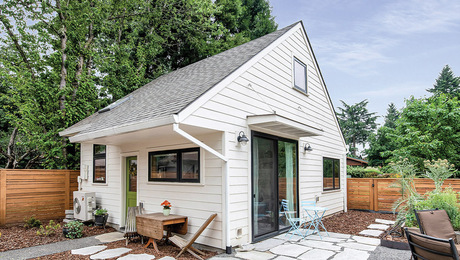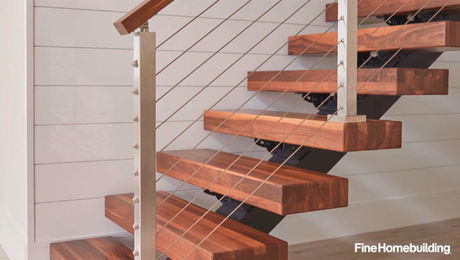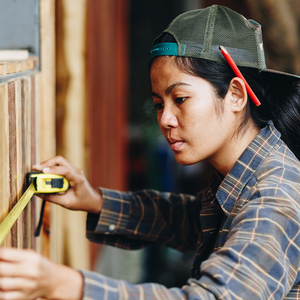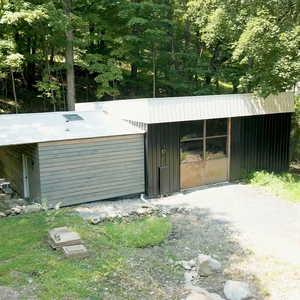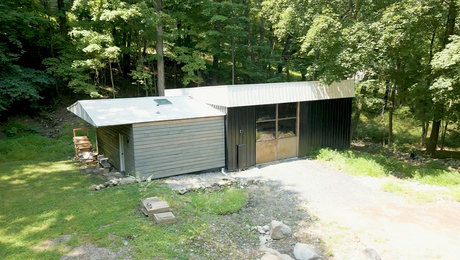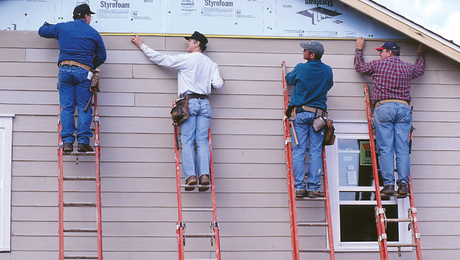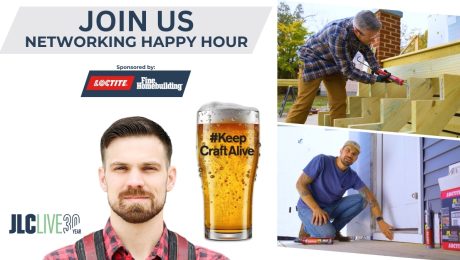Why Fortified Standards (and Others Like Them) Matter
With insurance premiums on the rise as weather events escalate, the solution is programs that are focused on strengthening our buildings.
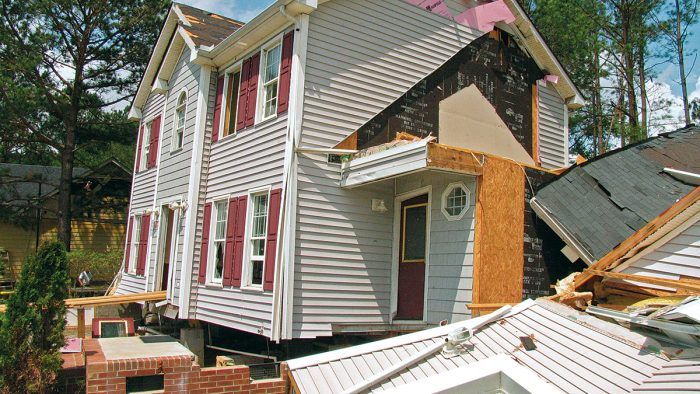
Insurance policies were born of risk aversion. Homeowners insurance was born of fire. The Great Fire of London, which took place over five days in September 1666, destroyed more than 13,000 homes and the resulting firestorm created its own weather. The first insurance companies dedicated to fire prevention emerged like the proverbial phoenix, selling novel policies that incentivized building with brick instead of wood.
Fire insurance was introduced to the American Colonies in 1732. A decade later, Benjamin Franklin founded the Philadelphia Contributionship for the Insurance of Houses from Loss by Fire, which he modeled after a London company and still exists today. But the home-insurance market didn’t truly catch on until a century later. By the mid-19th century, a $5 premium could get you $500 in fire coverage. (In today’s dollars, that’s roughly $200 a month for a $20,000 policy.) Making matters worse, the industry was largely self-regulated, rarely did policies cover a home’s full value, and scams and fraud, on the part of the insurers and the insured, were common.
Incentives tied to home insurance have certainly evolved since that time. Why should builders care? Today, with home insurance markets engulfed in crises of various makings, building more-resilient homes—and strengthening the ones we’ve already built—has become essential for those markets to remain solvent and competitive.
“Just as with the urban fires of old, much of the onus is on the home-building industry and its ability to harden homes.”
Many of history’s great urban fires (Boston in 1760; New York in 1845; Chicago in 1871) left grim reminders of the need for building codes that restricted wood-frame construction and the spread of fire between units. In the ensuing years, fire-reduction measures became codified, more advanced building materials entered the market, and new types of dwelling units (e.g., duplexes) were invented, replete with their own codes and built-in efficiencies. And that only brings us up to about the 1970s. Pivotal events including the 1989 San Francisco earthquake, the Oakland Hills Fire of 1991, and Hurricanes Andrew (1992) and Katrina (2005) all impacted the way we build homes, and left an indelible mark on the home insurance industry.
Most people have two goals when purchasing homeowners insurance: gain a safety net should their home burn down, collapse, or slip into the sea; and find an affordable policy that covers those possibilities. Achieving a balance of the two has proved difficult, especially in states and municipalities that are susceptible to extreme weather events. But increasingly few towns fall outside that category.
The growing severity and volatility of natural disasters has caused several insurance providers in recent years to effectively cut and run. Last fall in California, facing the reality of increased wildfire risk and rising construction costs, State Farm and Allstate both announced that they would be “pausing” new homeowners policies in the state “to protect current customers.” In other instances, smaller private insurers have gone insolvent. With dwindling supply and increased demand, the California home insurance market has grown unstable and premiums have soared. Similar trends are ongoing in Colorado, Louisiana, New York, Oregon, and Texas.
“It is not unusual for insurance companies to pause accepting new customers in order to protect [their] ability to pay the claims of existing customers,” said a representative of the National Association of Insurance Commissioners (NAIC), an organization that aids commissioners in regulating the industry, in an email. “When one company leaves the market, another typically steps in to serve new customers. And in those instances where a customer can’t find coverage, many states have an ‘insurer of last resort,’ often called FAIR plans, to provide coverage.”
FAIR (fair access to insurance requirements) plans—instituted at the state level but underwritten by private companies, with some exceptions—are designed to provide home coverage in high-risk areas. By law,
such plans of last resort cannot be excessive, inadequate, or unfairly discriminatory. Currently, FAIR plans have been enacted in 32 states plus Washington, D.C., and Puerto Rico. As a stopgap, FAIR plans (and similar plans in coastal states that specifically cover windstorm and hurricane damage) are suitable measures. But their deductibles can be on the high end, and an increasing demand for them reveals the insurance industry’s difficulty maintaining a viable marketplace. Just as with the urban fires of old, much of the onus is on the home-building industry and its ability to harden homes.
“What’s going on in California is a problem that traces its roots all the way back to the 1970s,” says Dr. Ian Giammanco, lead research meteorologist with the Insurance Institute for Business & Home Safety (IBHS). “We put a bunch of vulnerable construction that had little exterior fire resistance close together, and then butted it up against the places where wildfire was already part of the ecosystem. It’s mimicking many of the same building characteristics of the great urban fires of centuries ago.”
Indeed, the best defense against rising insurance premiums, or getting dropped by a provider altogether, is to strengthen homes against the elements. The Fortified construction standard is a hurricane resiliency program developed by IBHS; there are other similar programs as well, such as Habitat for Humanity’s Habitat Strong. But in most states, grants, insurance discounts, and tax incentives for building to these standards are not available, at least on a statewide level. The organization Smart Home America maintains an incentives map of mitigation credits—discounts for meeting Fortified standards and other programs—which to date includes 14 states. But ensuring equitable distribution of such incentives comes down to public awareness.
The gold standard is in Alabama. Strengthen Alabama Homes (a forerunner to Smart Home America), which is part of the state’s Department of Insurance, was launched over a decade ago to “help create a viable and sustainable property insurance market along coastal Alabama,” says its founding director, Brian Powell. The program awards grants of up to $10,000 to homeowners for implementing wind mitigation measures that meet the Fortified standard. To date, the organization has invested nearly $64 million to harden and retrofit approximately 6600 homes along the Gulf Coast.
“What does this mean for builders? Fortified standards—and others like them—will need to become part of their repertoire.”
“We wanted to incentivize people to buy affordable home insurance … on a large scale. And as we started educating people and moving forward, we started seeing jurisdictions adopt a Fortified standard as part of their building code,” Powell says. The Strengthen Alabama Homes model has essentially been carbon copied in Louisiana, the Carolinas, and elsewhere, all under the auspices of IBHS, which has collectively helped strengthen approximately 55,000 homes. Compared to where things stood over a decade ago, when providers in that state numbered “in the single digits,” says Powell, Alabama now has a sustainable and solvent insurance market, with some 30 providers engaging in healthy competition.
Despite Alabama’s example, thoughtful mitigation and progressive building codes are not a surefire defense against unscrupulous insurance practices. In Florida, where building codes were updated to include more resiliency measures in the wake of Hurricane Andrew, a property insurance crisis has nevertheless been underway for the last couple of years. In June 2022, provider Southern Fidelity was ordered into liquidation, leaving about 80,000 policy holders in the lurch. A year later, Farmers Insurance announced it was pulling all policies in the state, impacting an additional 100,000 homeowners. Florida has some of the highest home insurance rates in the country. But the cause of this isn’t weakness in the building structures.
Florida accounts for nearly 80% of all insurance lawsuits filed in the U.S., according to the Insurance Information Institute (III). “Florida billboard attorneys took advantage of loose regulations and favorable court rulings to file frivolous lawsuits,” says Mark Friedlander, III’s director of corporate communications. The state-backed insurer of last resort, Citizens Property Insurance Corporation, fast became the largest policy writer in the state. But thanks to new regulations passed in 2023 that eliminate one-way attorney fees and limit the types of lawsuits that can be filed against property insurers, Florida’s private market is slowly recovering.
Nowadays, one cannot get approved for a mortgage without having a home policy in place. But this otherwise clerical issue is now an existential one. Rising real estate values, supply-chain disruptions, and a skilled-labor shortage are all driving up costs associated with repairing and rebuilding properties. Couple this reality with an increase in natural disasters and a hostile legal environment, and you end up with an insurance market that’s incapable of sustaining itself, let alone providing equitable access to affordable policies.
Getting around this problem, particularly in vulnerable areas, requires adequate funding for mitigation efforts to improve home resiliency. What does this mean for builders? Fortified standards—and other similar resiliency efforts—will need to become part of their repertoire. Of course, having organizations like IBHS and programs like Strengthen Alabama Homes to incentivize those standards in the first place is equally important. Then homeowners can reap those benefits with both strengthened homes and affordable home insurance.
Justin R. Wolf is a Maine-based writer who covers energy and climate policy and green building trends. Photo courtesy of Bryan Readling.
RELATED STORIES

